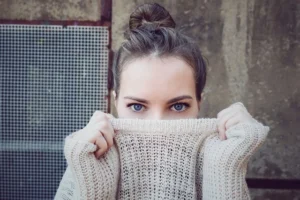The Ultimate Guide to Fashion Terminology: Unlocking the Secrets of the Fashion Industry
Table of Contents
Introduction
Fashion Terminology one zero one
- Key Fashion Terms
Fabric and Texture
- Natural and Synthetic Fibers
- Types of Textures
Garment Construction
- Key Processes in Garment Making
Fashion Styles and Trends
- Haute Couture
- Ready-to-Wear
- Streetwear
- Sustainable Fashion
Accessories and Embellishments
- Hats, Scarves, Jewelry
- Common Embellishments in Fashion
High Fashion: The Epitome of Style
Fashionable: A Synonym for Style
- Trendy vs. Timeless Fashion
Conclusion
FAQs
Introduction
Fashion is an ever-evolving form of self-expression that blends creativity, way of life, and functionality. For anybody seeking to understand style extra deeply, it’s essential to understand the terminology. The style industry operates with a unique language along with specialized phrases describing fabrics, advent techniques, accessories, and patterns. This guide goals to unfastened up the important fashion vocabulary and offer insights into how style experts use the ones phrases to explain their designs, traits, and innovations.
Fashion Terminology one zero one
Understanding fashion terminology is vital for specialists, lovers, or perhaps informal shoppers who want to be more informed. Whether you are studying approximately the ultra-modern high style display or selecting fabric to your next outfit, understanding key phrases can rework how you perceive and engage with fashion.
Key Fashion Terms
A-line: A sort of dress or skirt this is outfitted at the waist and flares out in a instantly line.
Bias: A cloth cut that runs diagonally throughout the grain, growing flexibility and drape.
Bouclé: A looped or curled yarn, often used for growing textured material.
Chambray: A mild-weight cotton fabric, usually with a clean quit, harking back to denim but softer.
Couture: High-end style that is custom-made for clients, frequently crafted with terrific detail.
Dart: A fold sewn into the cloth to provide form, usually utilized in girls’s apparel to suit the frame better.
These are just a few primary phrases, but they form the muse of a deep and complicated fashion vocabulary.
Fabric and Texture
One of the vital element aspects of favor is knowing fabrics and textures. The cloth used in a garment can dictate how it feels, drapes, and wears over time.
Natural and Synthetic Fibers
Natural Fibers: These come from herbal assets like flowers and animals. Some examples encompass:
Cotton: A gentle, breathable fiber derived from cotton plants, widely used for its consolation.
Wool: A heat, insulating fabric from sheep, prized for its resilience and moisture-wicking houses.
Silk: A pricey, easy cloth produced by means of silkworms, stated for its shine and splendor.
Synthetic Fibers: Man-made substances designed to imitate or improve upon natural fibers:
Polyester: Durable and wrinkle-resistant, regularly used for blends.
Nylon: Strong and stretchy, well-known in activewear.
Spandex: Extremely elastic, used to offer stretch and match.
Types of Textures
Textures in style affect the garment’s standard aesthetic and sense. Here are some not unusual textures:
Smooth: Found in materials like silk and satin, easy textures regularly add elegance.
Rough: Materials like tweed or burlap offer a greater rustic, textured look.
Soft: Fabrics like velvet or fleece, which may be plush and comfortable to touch.
Garment Construction
Garment manufacturing refers back to the strategies used to deliver a apparel design to existence. Understanding those terms can help recognize the artistry this is going into making a piece of garb.
Key Processes in Garment Making
Pattern Making: This is the technique of creating the blueprint for a garment. Patterns make certain the proper healthy and shape.
Cutting: After the sample is created, the fabric is reduce based mostly on its form. The manner cloth is reduce (on the unfairness, for example) can affect its drape.
Sewing: The method of assembling the garment with the aid of stitching the portions of material collectively.
Finishing: This entails the very last touches, like hemming, including zippers, or stitching in buttons, giving the garment a cultured appearance.
The artistry of garment manufacturing is vital in ensuring high-quality and toughness in garb.
Fashion Styles and Trends
Fashion patterns and developments are continuously shifting and evolving. From the excessive-stop steeply-priced of high fashion to the casual consolation of streetwear, every fashion incorporates its particular vocabulary and developments.
Haute Couture
Haute couture represents the highest level of fashion design, characterised through manner of:
Custom-made garments
Exquisite fabric
Detailed craftsmanship and problematic elaborations
Available absolutely to man or woman customers
Ready-to-Wear (Prêt-à-Porter)
Ready-to-wear refers to clothing this is closely produced however however designed via luxurious manufacturers:
Produced in general sizes
Available off-the-rack
Less high-priced than excessive style however nevertheless excessive in exceptional
Streetwear
Streetwear is a fashion motion rooted in city culture, frequently characterized by way of manner of:
Casual, comfortable patterns
Influences from skate and hip-hop cultures
Bold pix, logos, and logo names
Sustainable Fashion
Sustainable style makes a speciality of ethical production, using eco-friendly materials, and lowering environmental impact:
Fabrics like natural cotton or recycled polyester
Ethical difficult work practices
Minimal waste and power-inexperienced manufacturing techniques
Accessories and Embellishments
No outfit is entire with out the proper accessories and gildings. These final touches add persona and aptitude to any appearance.
Hats, Scarves, and Jewelry
Hats: From conventional fedoras to fashionable bucket hats, headwear can make a style statement.
Scarves: Scarves are to be had in diverse styles and sizes, including color, texture, and warmth.
Jewelry: Rings, bracelets, necklaces, and jewelry can increase any outfit, turning informal seems into a few thing more formal or stylish.
Common Embellishments in Fashion
Sequins: Sparkling disks sewn onto fabric to create a shimmering impact.
Beading: Tiny beads are hand-sewn or glued onto clothing for introduced ornament.
Embroidery: Decorative sewing carried out via hand or device to create complicated designs.
High Fashion: The Epitome of Style
High fashion, or haute couture, represents the top of luxury and craftsmanship in the style global. This level of style is described via using steeply-priced substances, which include silk, velvet, and cashmere, as well as meticulous interest to detail. High style portions are often custom-made for clients, making them no longer only precise but moreover symbols of wealth and class.
Fashionable: A Synonym for Style
The word “elegant” is regularly used interchangeably with “fashionable” or “in fashion.” While tendencies may additionally come and move, a actually elegant individual is one who is aware of the manner to mixture undying portions with modern touches.
Trendy vs. Timeless Fashion
Trendy: Represents modern, frequently fleeting, models which can be closely induced with the resource of famous lifestyle.
Timeless: Refers to patterns that in no way go out of favor, including a conventional trench coat or little black dress.
Conclusion
Fashion terminology is a gateway into know-how the fashion company at a deeper degree. Knowing the right phrases—whether or now not related to fabric, creation, or style—assist you to navigate the fashion global extra with a piece of luck. With a robust expertise of key phrases and ideas, you will be better equipped to unique your very very own fashion, apprehend excessive fashion, and make informed dresser alternatives.
FAQs
Q.What is style terminology?
A.Fashion terminology refers back to the language and specialized vocabulary used within the style employer to describe styles, substances, strategies, and developments.
Q.Why is it critical to recognize fashion terminology?
A.Understanding style terminology allows you navigate the style international with self notion and make better choices on the challenge of choosing garb and add-ons.
Q.What are some commonplace style phrases?
A.Some commonplace style phrases embody A-line, bias, bouclé, chambray, couture, dart, and haute couture.
Q.What is the distinction between herbal and synthetic fibers?
Natural fibers are derived from plant life and animals, collectively with cotton and wool, even as artificial fibers like polyester and nylon are guy-made.
Q.What is excessive fashion?
A.High style, or high fashion, represents the very first-class degree of pricey and craftsmanship in fashion, usually custom-made for person clients the usage of pinnacle elegance materials.



